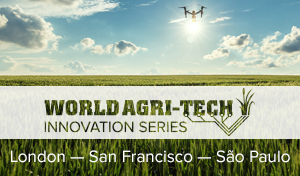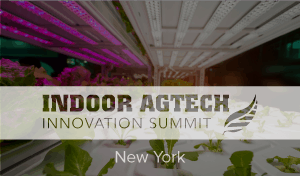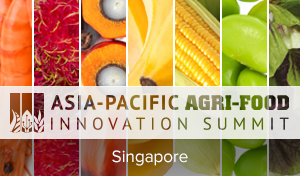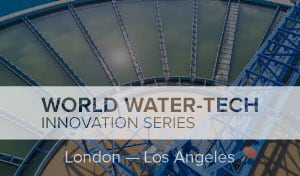As technological advancements continue and costs become more accessible, how are traditional and modern fisheries adopting data-driven approaches and intelligent systems into their production processes?
Leveraging data, automation, and cutting-edge tech like IoT, Big Data, AI, and robotics into existing production systems promises to provide a paradigm shift in global aquatic food production.
From high-end automated land-based farms to decentralised smallholder solutions providers, leading aquaculture producers, investors, technology experts from across the world paint a picture of the digital landscape in the blue economy and share their insights into the latest developments in advancing smart aquaculture.
Read on for a taste of the discussions to be had at the summit from senior executives at Aquaconnect, Victory Farms, SeaAhead, Salmon Evolution, Coast 4C, Naturemetrics and Reeldata AI when they take to the stage in London on May 21-22:

What is the current state of intelligent aquaculture and what challenges hinder the deployment and integration of AI and precision tools within the blue food value chain?

Citing examples of practical data and AI applications from its Norwegian land-based salmon farm, Salmon Evolution’s Trond Hakon Schaug-Pettersen says, “We use AI applications for controlling feed intake and waste reduction. We always collect an enormous amount of data and are striving for a constant and optimal environment.” In 2023, Salmon Evolution was positioned as the world’s largest and leading land-based producer of Atlantic salmon leading land-based producer of Atlantic salmon and Trond sees advanced AI integration as an integral part of the company’s long-term competitive advantage, “These insights help us improve farm operations to optimise the output, in terms of volume, quality and cost.”

“Environmental variability can make aquatic systems unpredictable which has historically caused challenges around gathering accurate data”, emphasizes Kat Bruce, CEO of Naturemetrics, an advanced data monitoring company transforming species data at site-level into meaningful insights.
“However, with the right technology it is now possible to gain a reliable snapshot of aquatic environments independently of environmental factors, enabling consistent, accurate data gathering of those systems, enabling effective AI and precision tools.”

“Talking about the visionary dreams and incredible potential of AI and precision tools is certainly exciting. However, turning this vision into reality is not going to be a ‘walk in the park.’” Aquaconnect’s Founder and CEO, Rajamanohar Somasundaram, an emerging aquaculture solutions provider based in India, sets realistic expectations of deploying AI in aquaculture: “Without the necessary data, AI models may not yield the impactful results we envision. The journey begins with data collection and driving digitization in the sector, which are crucial for bringing predictability.”

“Our retail locations operate without electricity and without ice- and on average we achieve lower spoilage than a Dutch supermarket chain,” says Joseph Rehmann, Founder and CEO of Victory Farms, Africa’s rapidly scaling aquaculture producer specialising in tilapia production. Highlighting the benefits of digitisation in aquaculture especially in financially constrained regions, Joseph elaborates, “We use robust historical data to predict the fish consumption in an average village or town, stock the exact amount of fish needed and delivered within 36 hours of harvest. This is only possible through precision tools.”
Where can advancements in AI technologies, digital solutions, and automation be most helpful in the blue food industry?

Mathew Zimola, CEO of Reeldata AI envisions the impact of automation and AI to solve the challenges of data collection and decision-making. “Specialised AI tools provide farmers more precise information allowing them to optimise performance and health. This information is not only good for farmers, but also provides regulatory agencies with accurate information for better decision-making.”
Talking about the scope of these technologies effectively serving the aquaculture sector, Mathew responds, “Companies that can deliver innovation within aquaculture are limited to venture capital or substantial government financing” which leads to a siloed market for buyers keen to explore innovation.

Highlighting the interesting use case of AI and digitisation in seaweed production, Coast 4C’s Nick Hill shares, “Often in aquaculture we want to have full control over systems – so we’re increasingly seeing aquaculture moved onshore into more controlled environments. That won’t work for the large-volume seaweed markets.” Nick Hill is the Founder and CEO of Coast 4C, an award-winning social enterprise focused on regenerative seaweed farming and developing mobile technologies for small-scale seaweed producers in Southeast Asia. “But if we want to see the real potential of seaweed to address our challenges of sustainable growth, we need to better understand and adapt to the open ocean systems. AI and digital technologies are very well placed to support that and can really empower smallholder producers to drive massive growth in the blue economy. However, they must ultimately play a SUPPORT function to the local ecological knowledge of smallholder farmers.”

Running parallels with the advancement of automation in the agri-food sector, Luke Sawitsky notes, “Terrestrial agriculture has much more deeply developed lines of brood-stock than aquaculture, including both algal and animal species,” Luke is the Vice President of Programs at SeaAhead, aiming to advance venture development at the intersection of innovation, sustainability, and the ocean. “Optimising brood-stock strains for survival, growth, temperature resistance, and other factors could yield significant benefits.”
Echoing the role of AI in ‘human augmentation’ rather than ‘human replacement’, Joe underlines the potential use cases of the technology, “AI will play a role, but AI deployment will be customised to fit the business needs here, which are unique to our region. AI will become integrated with cold chain systems, combined with product source validation (blockchain or similar), to ensure product integrity and quality meet safety standards.”
“Looking at the bigger picture, AI has the potential to be a game-changer in the blue food value chain,” Raj concludes. “On a broader level, a significant aspect I envision is bringing predictability and efficiency to take macro-level decisions that support the value chain players in their day-to-day operations. With blue food being one of the most efficient sources of protein, adopting such futuristic solutions, can further drive efficiency, sustainability, traceability, and eventually make blue food greener.”

 CLOSE
CLOSE






